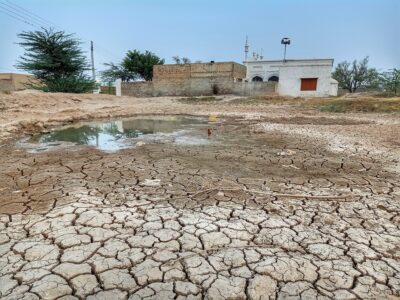
The relationships that make up our global food system illustrate just how interconnected and interdependent the world has become. Networks and supply chains link food producers, suppliers, processors and transporters, and move food around the globe in an attempt to feed the world’s 7.4 billion people.
With this complex system comes opportunity and also risk—weather, climate, trade, and energy, water and land use can all impede access to food in ways that are often hard to predict.
A crop failure in one part of the world can lead to higher prices and empty shelves in another, as demonstrated by the global food crisis of 2007-08. In the two years prior, wheat and corn prices had doubled, and rice prices quickly tripled during late 2007 and early 2008, resulting in political and economic instability, as well as food riots in 13 African nations, parts of Southeast Asia and other countries around the globe.
Michael Puma, an associate research scientist at the NASA Goddard Institute for Space Studies and a Center for Climate and Life fellow, studies food security to improve understanding of the fragility of the global food system and how it might respond to major disruptions. If one part of the system breaks down, which countries or regions might have difficulties with food supply? How will the global food trade respond to problems?
Puma approaches questions about food availability, access and stability through network science, an emerging field that deals with the interconnectedness of the modern world, and explores how connectivity and complex systems leave us vulnerable.
“You can use this sort of network perspective to understand how disruptions propagate through interconnected systems,” Puma said. “By just looking at the relationship between different components in a system you’re able to start to see how disruptions spread. So it sort of naturally lends itself to looking at the global food system.”

Among Puma’s multiple lines of research on the sensitivity of the food system is a study examining what might happen if multiple years of drought in the U.S. were to result in another Dust Bowl, and how such a situation would affect the national and global food systems.
Another project is focused on the role of food reserves, and the question of how much food countries should store, to help in the design of appropriate policies. If, for example, the United States suffered a Dust Bowl-like event or some other type of weather disturbance that affected corn and wheat production, should the U.S. continue trading those grains? Or should the country scale back exports to protect the domestic situation? What would the ramifications of these policies be for the U.S. and its trade partners?
“It’s important that the U.S. and all other countries recognize that they’re part of an interconnected system through trade, so when policies are developed, they are done in such a way that they recognize the interdependency among countries,” Puma said.
He also looks at the potential for climate change to cause major disruptions to the food system. Mounting evidence suggests that the world’s warming temperatures will lead to more frequent and severe extreme weather events. These will affect food processing, storage and transportation, industries that require increasing amounts of water and energy as global demand rises, potentially leading to higher food prices.
A 2015 study by the UK-US Taskforce on Extreme Weather and Global Food System Resilience suggests major food shocks—when crop failures lead to a sudden rise in the price of staple foods—will be three times more likely within 25 years because of an increase in extreme weather brought about by global warming. And a 2011 report from the National Academy of Sciences states that if global temperatures rise by between 1 and 4 degrees Celsius, we can expect a 5–15 percent reduced yield of U.S. corn, African corn and Indian wheat for each degree of warming.
“With climate change now influencing socioeconomic situations, the pressures on the food system are just going to increase. So this is really an area of research that needs a lot of attention,” Puma said.
But it’s not just the research that is necessary: Puma points out that communication is key. Scientists may find ways to increase the stability of the food system, but for changes to occur, their findings must be shared with stakeholders and used to craft policies and solutions that address the various pressures on the food system.
“At the end of the day, I’m trying to understand how we develop appropriate policy responses that take into account these interdependencies,” Puma said. “This is all so important in the context of a world that’s rapidly changing.”
Puma also stresses that food security is not just an issue for the world’s developing or poorer nations. Although these countries are the most vulnerable to local and global food disruptions, major food shortages can occur in developed, wealthier parts of the world.
“It’s important to recognize that the issue of food security is really a global issue. Every country around the world really needs to think about it and fund efforts to protect domestic production and help the poorer countries at the same time.”



